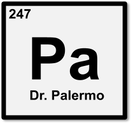Unit 5: Attractive ForcesPHENOMENON: Why did the pipe corrode?
|
Videos
|
|
|
Regents Core Curriculum
- The modern model of the atom has evolved over a long period of time through the work of many scientists. (3.1a)
- The electron is negatively charged. (3.1d)
- An oxidation-reduction (redox) reaction involves the transfer of electrons (e-). (3.2d)
- Reduction is the gain of electrons. (3.2e)
- A half-reaction can be written to represent reduction. (3.2f)
- Oxidation is the loss of electrons. (3.2g)
- A half-reaction can be written to represent oxidation. (3.2h)
- In a redox reaction the number of electrons lost is equal to the number of electrons gained. (3.3b)
- Oxidation numbers (states) can be assigned to atoms and ions. Changes in oxidation numbers indicate that oxidation and reduction have occurred.






